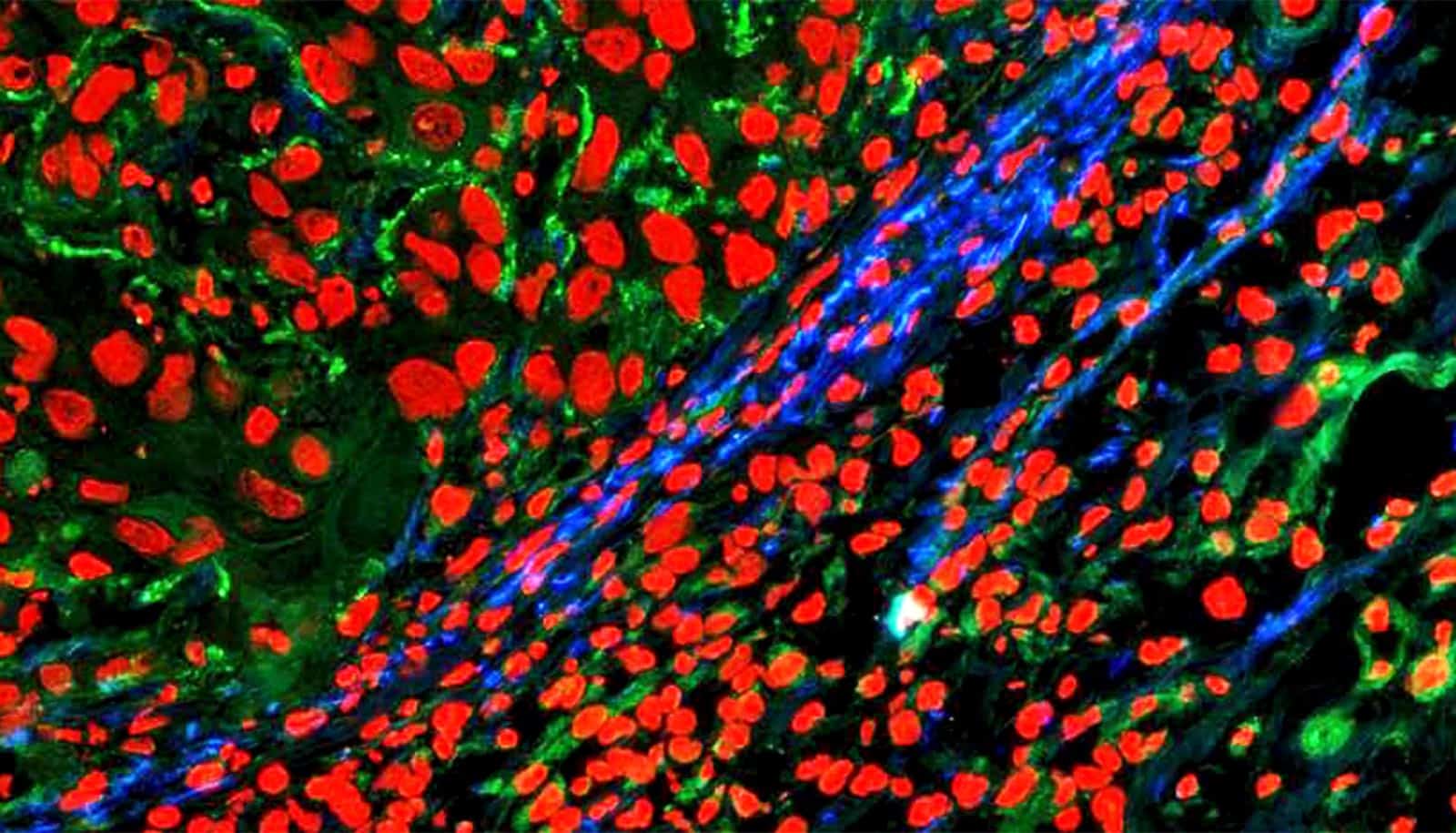Researchers have developed a molecule that lights up where new tissue is forming in the body.
Alongside helping to detect tumors, the molecule could play a significant role in research of wound healing disorders.
Collagen is the most abundant protein in the human body. It makes up a third of protein content and single strands assemble to form stable fibers that give structure to connective tissue such as skin, tendons, cartilage, and bones.
Our bodies start producing more collagen as wounds heal—or as tumors grow. During this process, the fibrous collagen molecules cross-link to create stable fibers. This requires LOX enzymes, which oxidize certain sites in the collagen molecules. Subsequently, the chemically altered sites on different collagen strands react with each other, causing the strands to fuse together.
Molecule latches onto collagen fibers
Helma Wennemers, a professor at the Laboratory of Organic Chemistry at ETH Zurich, led researchers in developing a sensor molecule with inducible fluorescence. The molecule itself isn’t fluorescent, but after reacting with the LOX enzyme, it begins to light up.
In this way, the sensor molecule acts as a marker for LOX activity. Next, the scientists combined this molecule with a short fibrous peptide similar to collagen. They conjugated this peptide with what is known as a reactive group that reacts with collagen only if the latter has been oxidized.
Sabine Werner, professor of cell biology, and colleagues conducted experiments with mice whose skin had been injected with the multi-component molecule. They also performed in vitro experiments with tissue sections.
Their investigations revealed that the molecule anchors itself to collagen fibers where new tissue is being formed. And it lights up when new tissue starts growing and the LOX enzyme is being formed.
“Thanks to its modular design with three components—the sensor, the peptide, and the reactive group—our system is exceptionally specific and precise,” says Matthew Aronoff, a senior scientist in Wennemers’ group and lead author of the paper in Nature Chemical Biology.
Tumor boundaries
Because new tissue forms primarily at the edges of tumors as they grow, one application for the new molecule is in biopsy examinations to show the boundaries of a tumor.
“One of our visions is that surgeons will one day use this molecule in an operating theater when removing a tumor,” Wennemers says. The molecule would show surgeons the boundary of the tumor and help them to remove it entirely.
Other potential applications for the new marker molecule are in the field of wound healing, for example to investigate tissue formation in general or healing disorders in patients suffering from diabetes or other diseases.
The scientists have applied for a patent for their system and are exploring various options for bringing it to market and developing it for a wider range of applications.
Source: ETH Zurich



